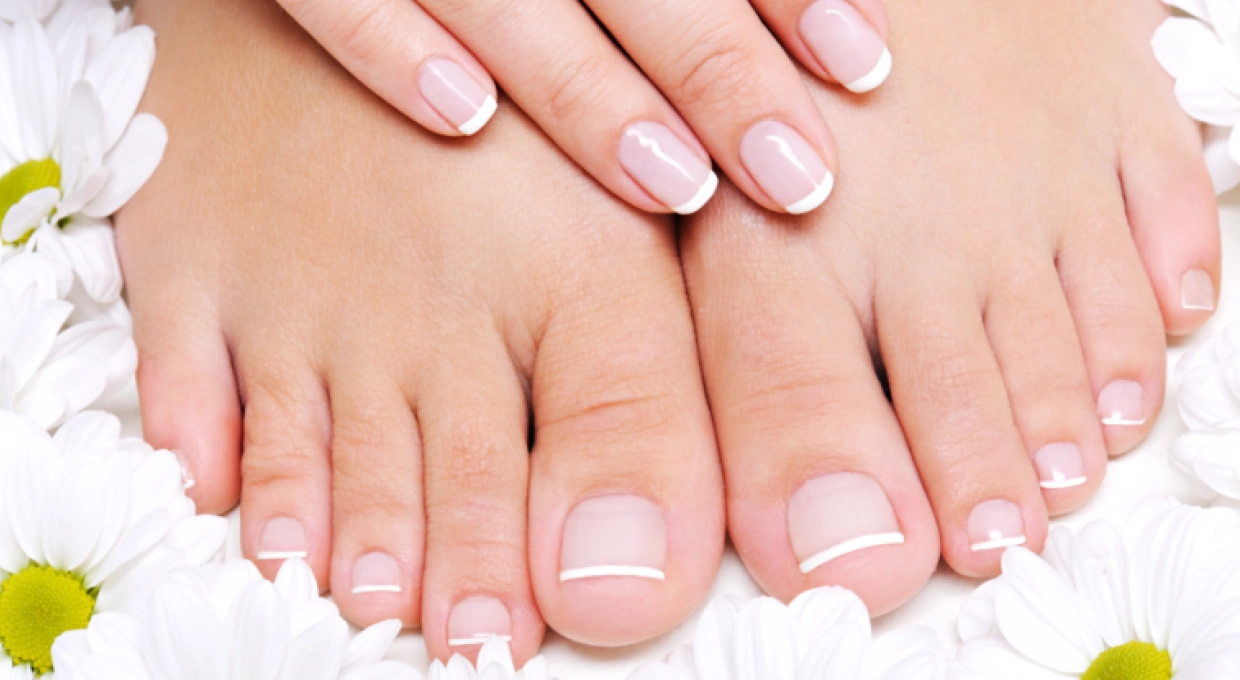Nails are an essential part of our body, not only for aesthetic reasons, but also for their protective function. Although fingernails and toenails have similar functions, they have notable differences in their structure and care. In this article, we explore the characteristics of both and offer tips for keeping them healthy.
Structural Differences

Fingernails and toenails are composed of the same protein, keratin, but have significant differences in their growth and thickness. Fingernails tend to grow faster, approximately 3 millimeters per month, while toenails grow about 1 millimeter per month. This difference in growth rate is due to factors such as less blood circulation in the feet and less exposure to sunlight. In addition, toenails tend to be thicker and harder than fingernails. This greater resistance is necessary to protect the toes, which endure more pressure and friction due to footwear and daily activity. In contrast, fingernails are thinner and more flexible, allowing for greater maneuverability and precision in manual tasks.
Protective Function and Sensitivity
Both toenails and fingernails serve as a protective barrier. Toenails protect the toes from injury and help maintain balance when walking and running. Fingernails protect the fingertips and improve the ability to manipulate small objects. In terms of sensitivity, fingernails are more exposed and therefore more susceptible to damage from bumps or cuts. Toenail sensitivity is often more related to problems such as ingrown toenails or fungal infections, which can cause significant pain and discomfort.
Care and Maintenance
Proper nail care is essential to prevent common problems such as infections, fungus and ingrown toenails. For fingernails, it is important to keep them clean and dry, trim regularly to the shape of the finger and avoid excessive use of harsh chemicals such as acetone nail polish removers. In the case of toenails, it is recommended to cut the nails in a straight line to prevent ingrown toenails and to wear appropriate footwear that does not squeeze the toes too tightly. It is also useful to keep the feet dry and well ventilated to avoid the proliferation of fungus.
Common Problems and Solutions
The fingernails and toenails can be affected by a variety of problems, such as fungal infections, trauma, and systemic diseases. Fungal infections are more common in toenails due to the warm, moist environment inside footwear. These infections can be treated with topical or systemic antifungal medications, depending on the severity. Trauma, such as blows or constant pressure, can cause nail deformities. In these cases, it is crucial to protect the nails and allow them to grow properly. If changes in the shape, color or texture of the nails occur, it is important to consult a professional for a proper diagnosis.
Conclusion
Toenails and fingernails, although similar in composition, have significant differences in their structure and function. Keeping them healthy requires specific attention and care. If you have problems with your nails or need advice on proper care, do not hesitate to contact Clínica San Román. Our team of specialists is here to help you maintain the health of your nails and feet. Contact us today to schedule a consultation and find out how we can improve the health of your nails and feet.



